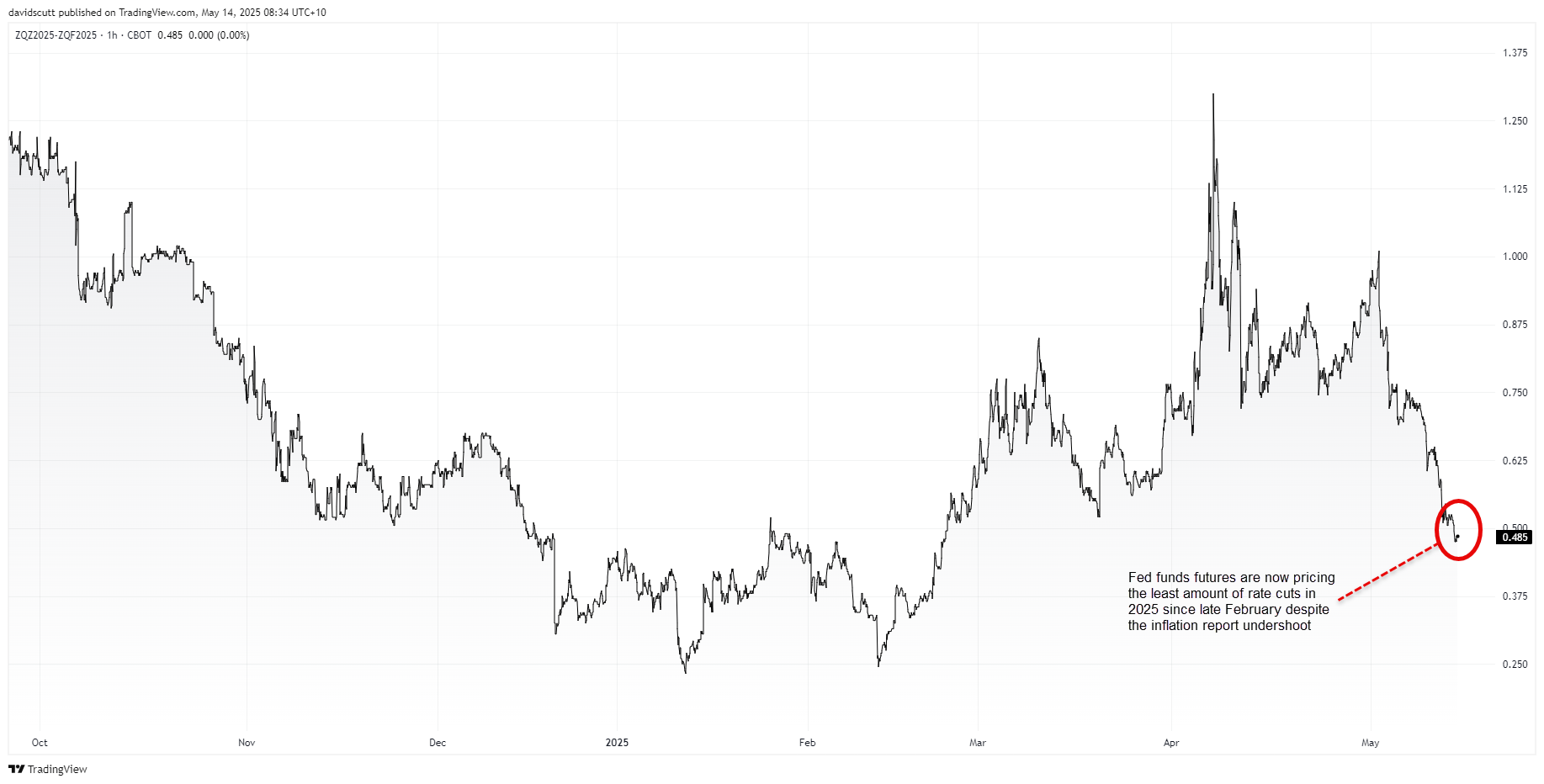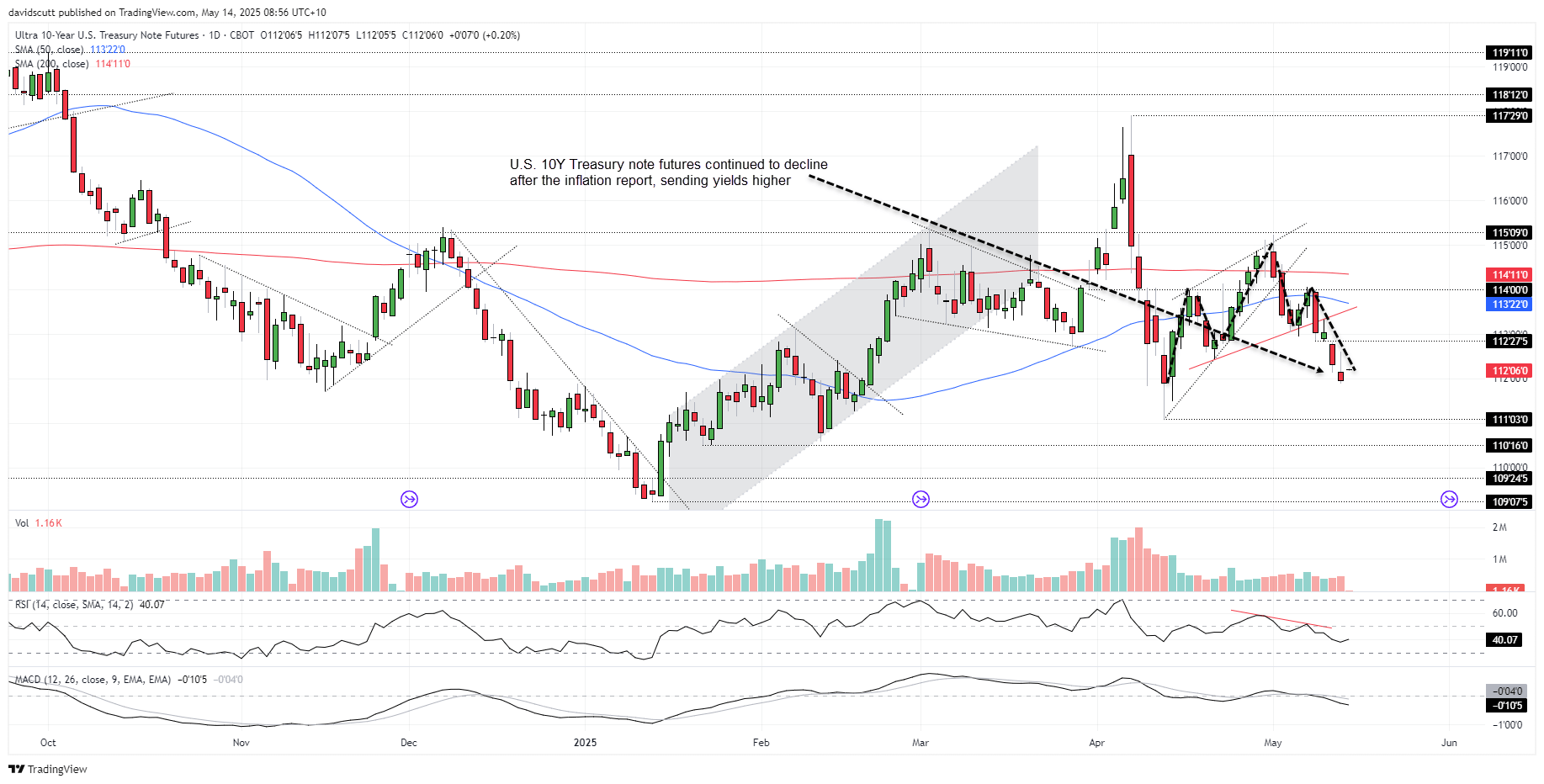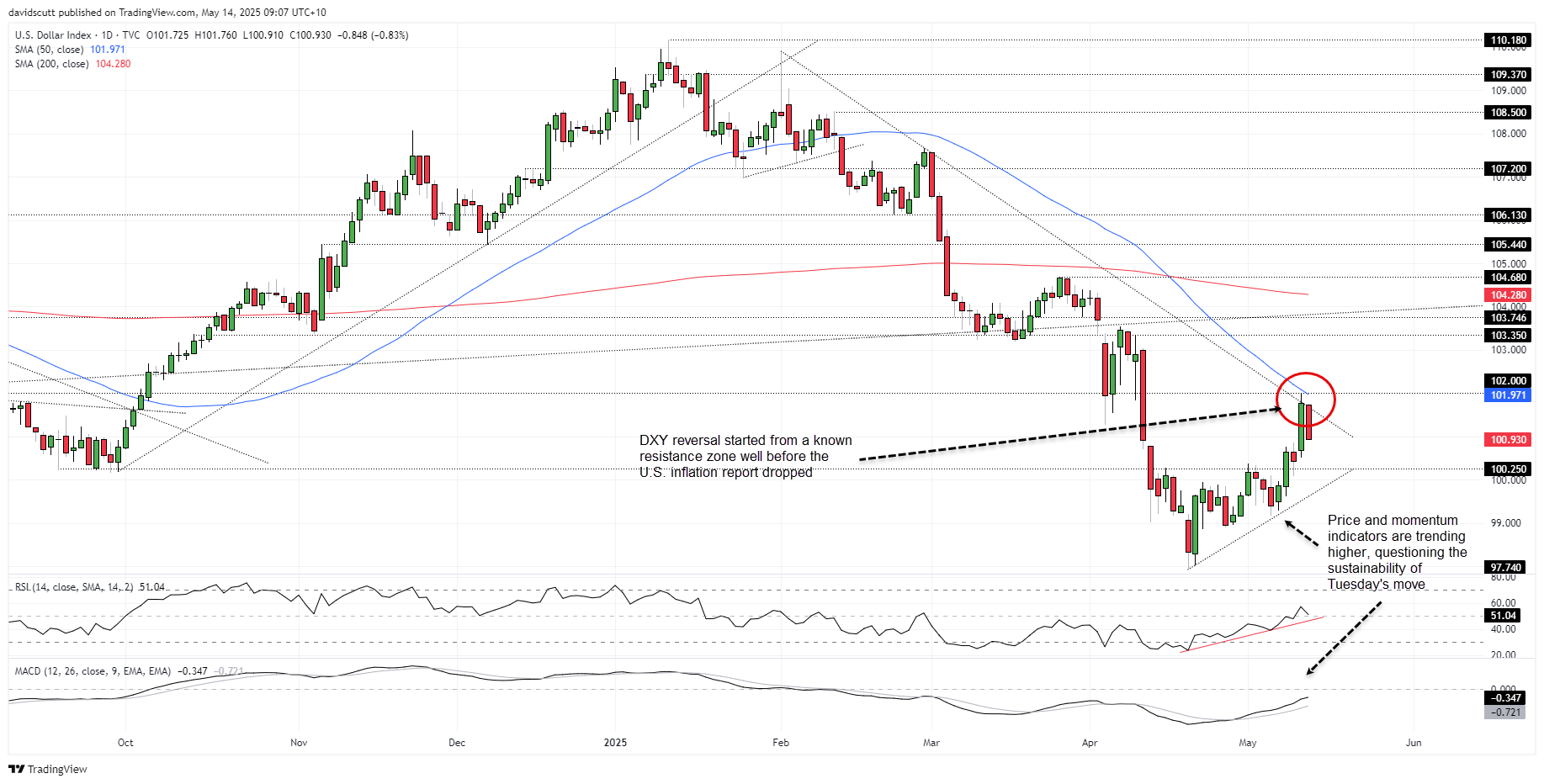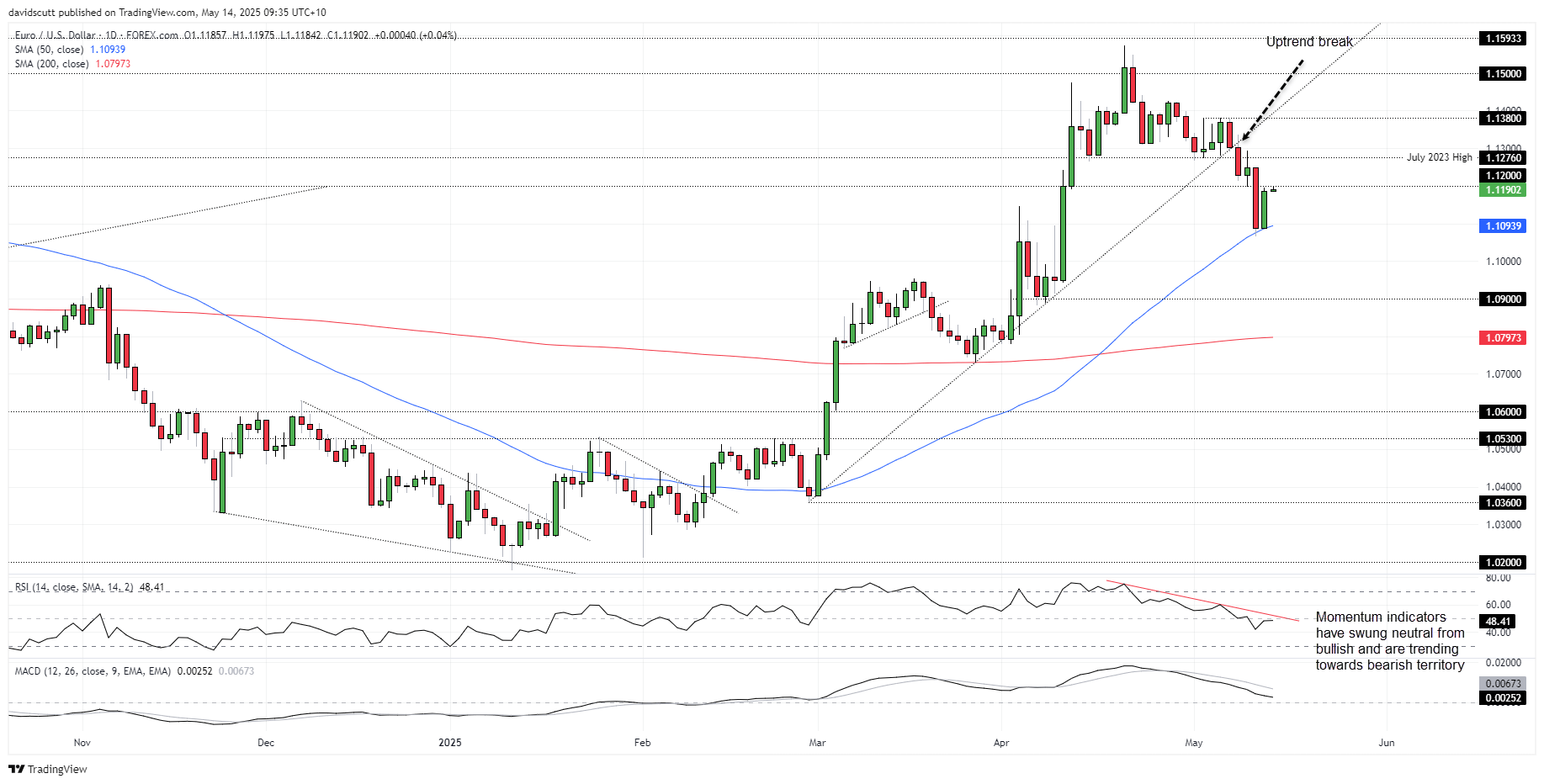Stock market today: S&P 500 ends lower as Fed rate cut, outlook meet expectations
- U.S. CPI miss sinks dollar, lifts euro
- U.S. Treasury yields rise, Fed rate cut pricing dwindles
- EUR/USD eyes 1.1200 as pivot
- Bearish signals building in momentum
Major US economic data still carries weight in FX markets, even if it can feel dated in a rapidly evolving macro environment. That was evident in the reaction to April’s US inflation report released Tuesday, with the US dollar reversing sharply on the softer-than-expected print.
But with price action elsewhere anything but uniform—especially in fixed income—it raises doubts over whether the move in FX has staying power. With many major currency pairs remaining highly obedient to known technical levels despite the volatility, the charts may hold more answers than the fundamentals.
Soft CPI Sparks USD Unwind, Bonds Not Convinced
The market reaction in FX was immediate to the inflation report. As the one-minute DXY tick chart shows, the modest undershoot in both headline and core rates triggered a clear unwind in the dollar right after the release.
Source: TradingView
Equities joined the move, but the bond market didn’t follow. Market pricing for 2025 Fed rate cuts actually drifted lower, as reflected in the Fed funds futures curve.
Source: TradingView
And rather than rallying, longer-dated Treasury futures continued to slide, echoing the bearish signals from the past week. Lower bond prices mean higher yields—an unusual response to soft inflation.
Source: TradingView
No matter the narrative, if the bond market doesn’t validate what’s happening in other asset classes, the move deserves scrutiny. It doesn’t mean the market is wrong, but bonds remain the most important signal for broader markets.
DXY Reverses from Known Resistance Zone
Outside of the divergence across asset classes, what really stood out Tuesday was how strictly major FX pairs respected known technical levels.
Source: TradingView
For the DXY, Monday’s bounce stalled just below the 50-day moving average and the downtrend stretching back to early February. That confluence triggered a sharp reversal, erasing much of the earlier rally. While the 102 level isn’t perfectly clean, it’s one the index has respected over recent years, possibly contributing to the unwind. Despite the pullback, DXY remains in an uptrend with momentum indicators drifting back to neutral, suggesting the broader bias is not bearish.
EUR/USD Stages Rapid Roundtrip
It’s a similar story with EUR/USD. Monday’s break below the key 1.1200 level saw the 50-day moving average tested before rebounding cleanly off it, returning the pair right back to 1.1200. That’s now the key level to watch, with price action around it likely to provide better guidance than the barrage of conflicting macro takes.
Source: TradingView
Even with the snapback, the edge still leans slightly bearish after last week’s break of uptrend support. That move flagged rising downside risks, and nothing since has changed that picture. RSI (14) and MACD both point to waning bullish momentum, remaining locked in downtrends that could produce firm bearish signals if they persist.
The 50-day moving average is an obvious hurdle for bears to overcome on the downside. If it were to be broken, it opens the door for a run towards support at 1.0900 and the 200-day moving average. If the price is able to push back above 1.1200 and hold there, it would invalidate the mildly bearish bias, putting resistance at 1.1276 and 1.1380 on the menu for longs.
With a quieter data calendar on Wednesday, let the price action guide you on how to best proceed.
